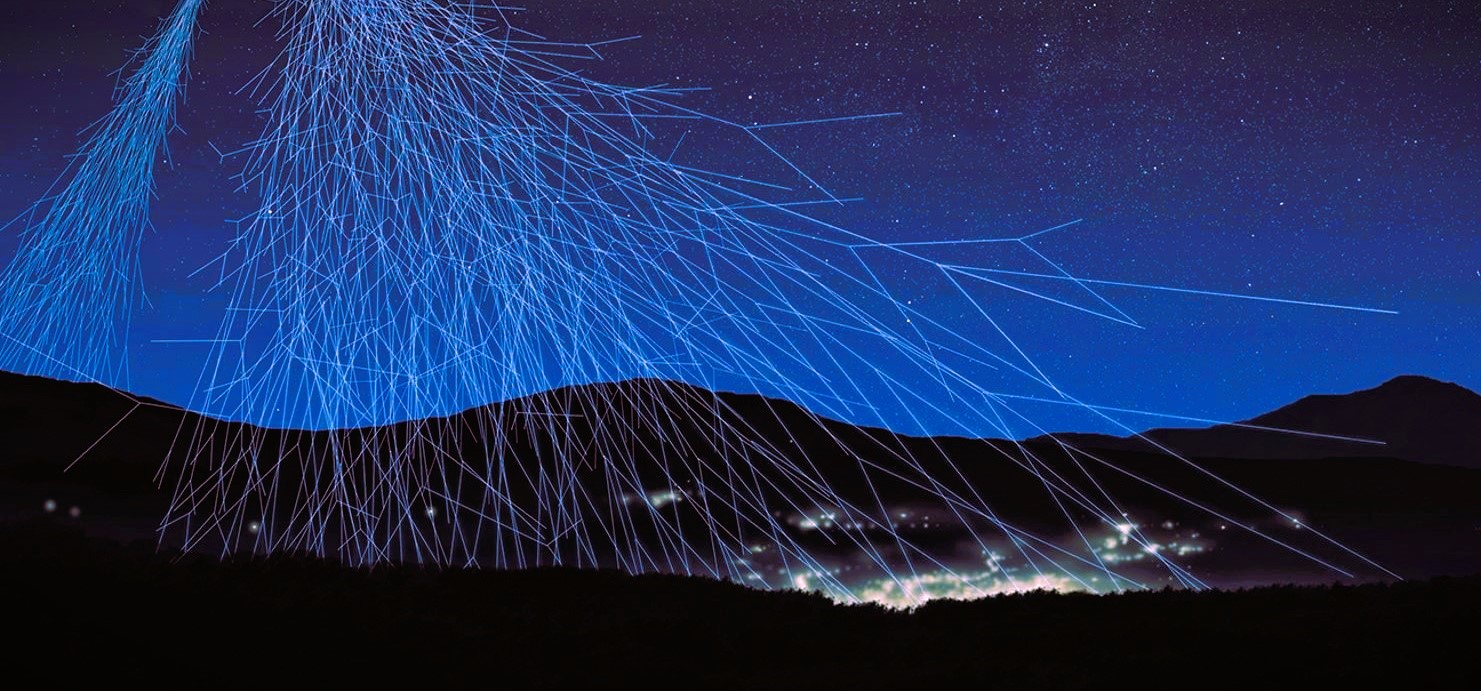After the assemble and calibration process at the LIP detector laboratories in Coimbra, the CorePix muon telescope was transferred to the Lousal Mine.
The CorePix was installed inside the Waldemar Gallery in the Lousal Mine in April 2022. Since then, it has been operating inside a gallery storeroom, collecting mugraphic data.
CorePix installation at the Lousal Mine
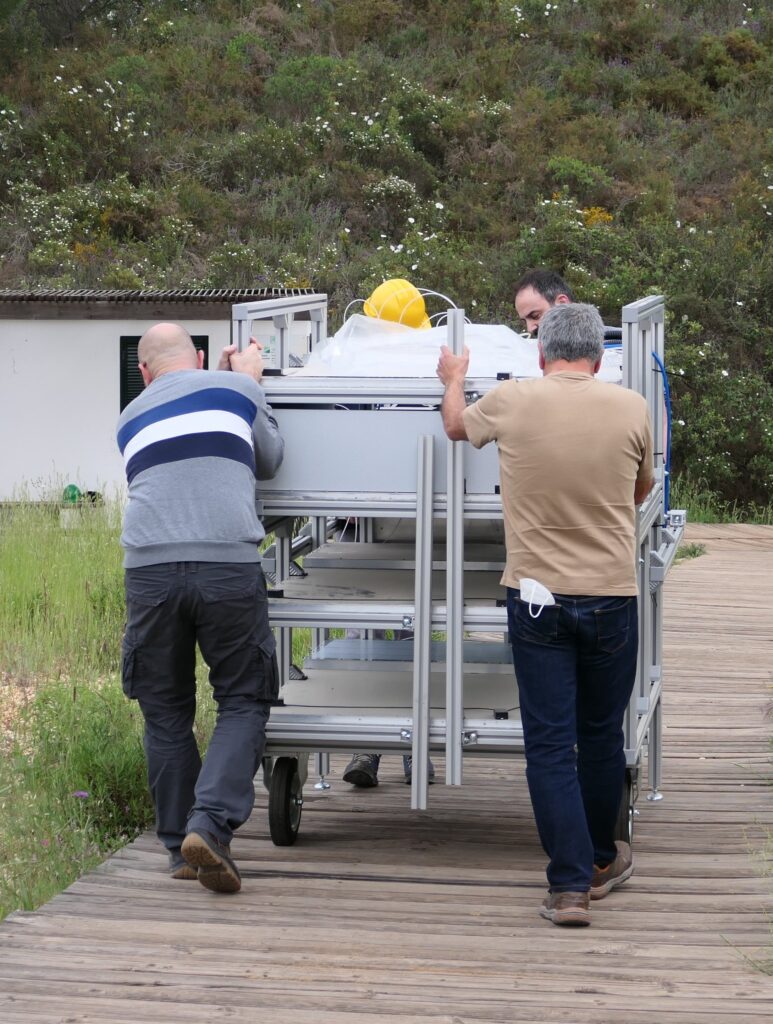
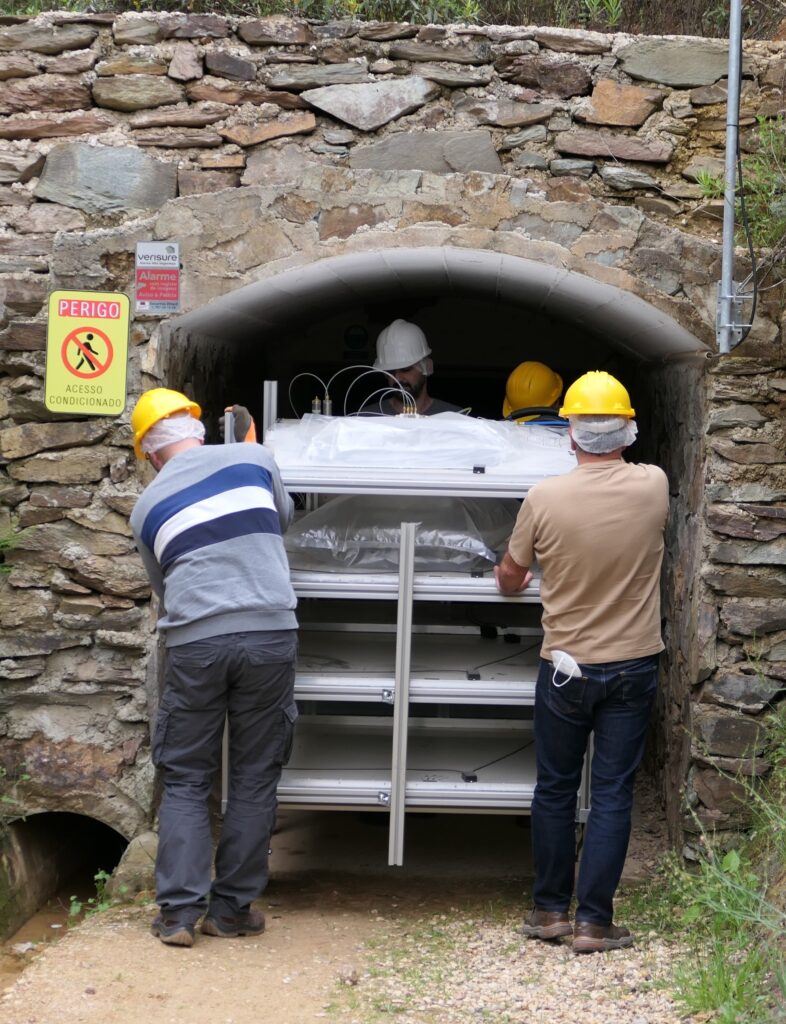
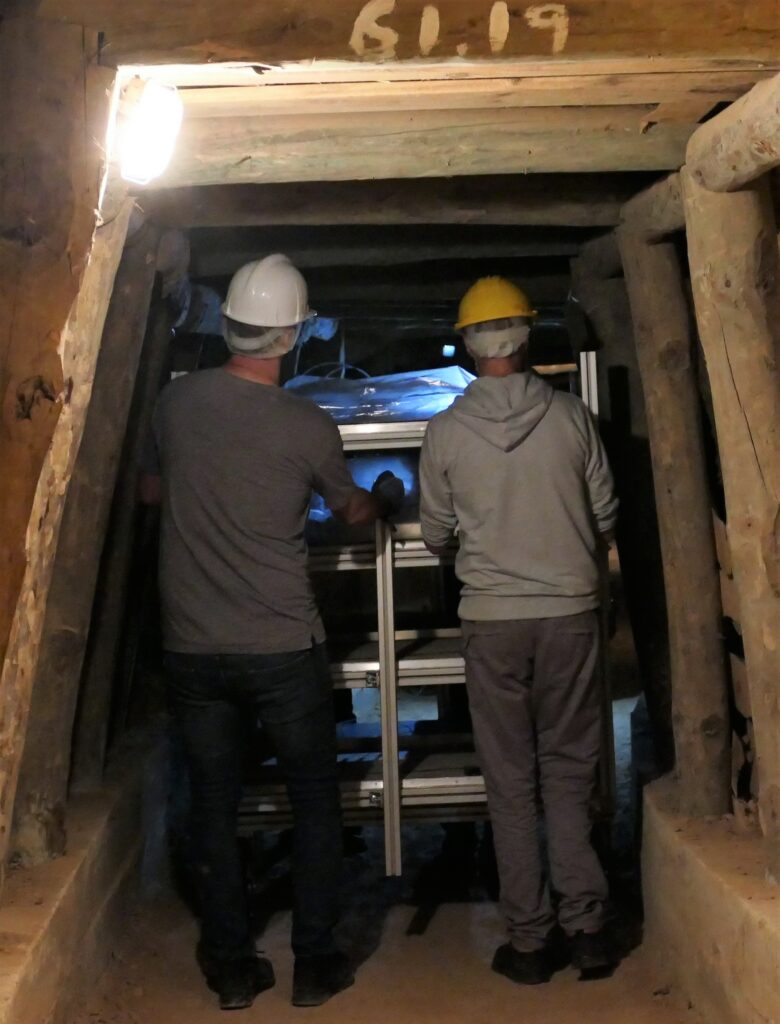
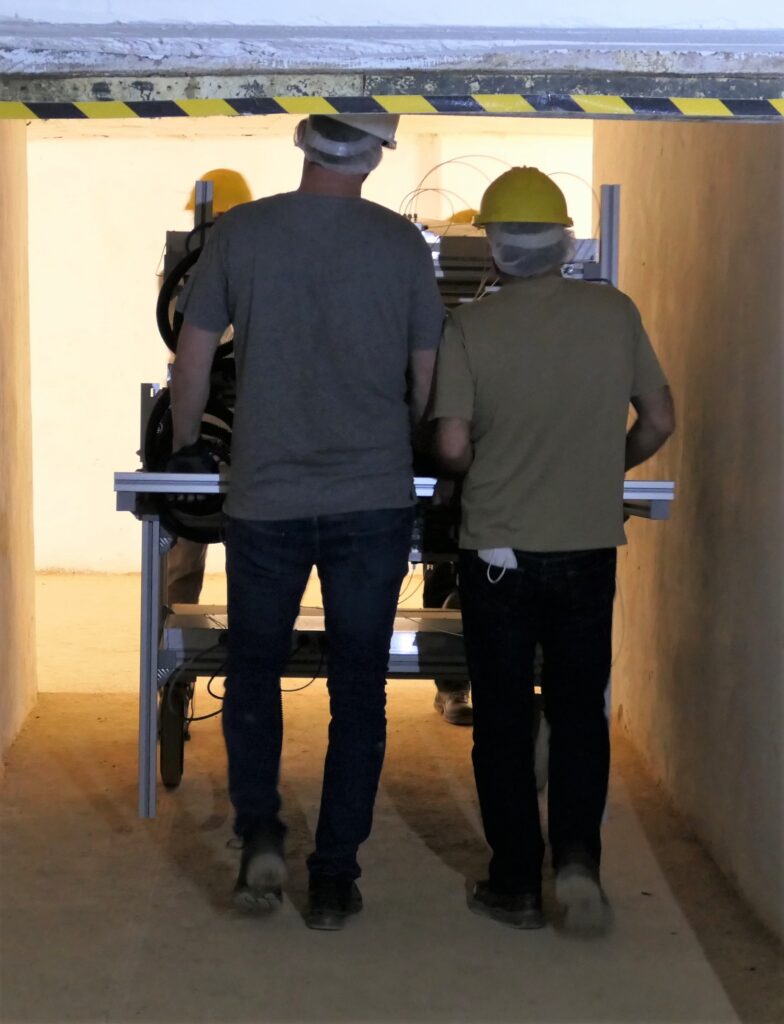
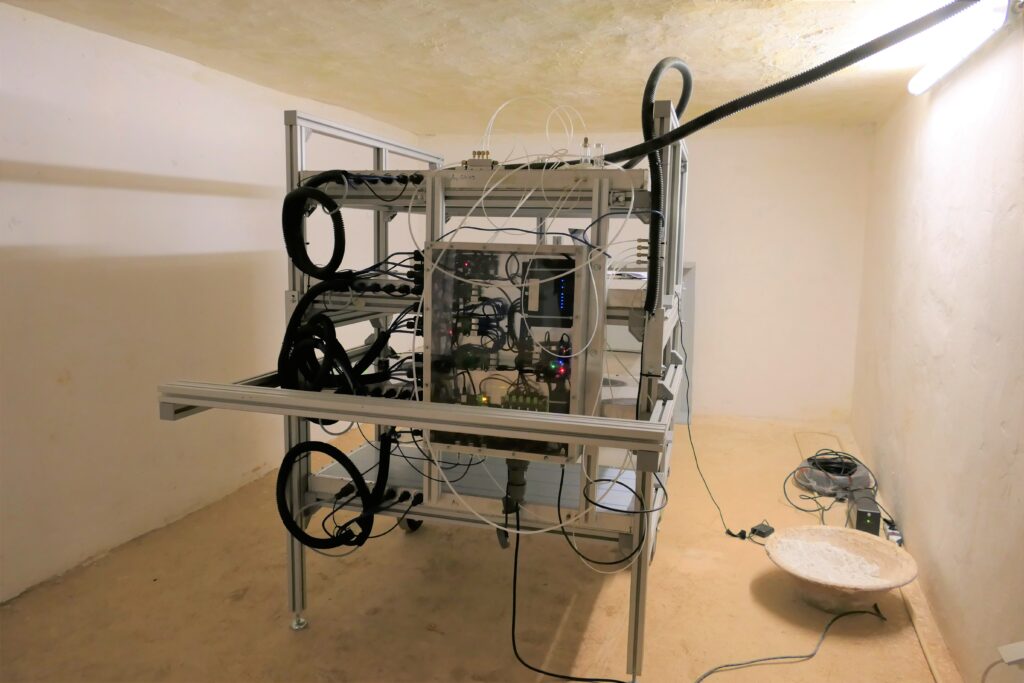
The CorePix was transferred from the Coimbra laboratory to Mina do Lousal in April 2022. In order to be moved along the Waldemar gallery to the storeroom 4, the place where it would remain, it was necessary to dismantle some parts of its structure. Once in it’s place, it has been operating since then, almost continuously, recording the passage of the muons and generating the muographic data that are used in the analyses.
The complete structure of the CorePix has a height of about 1.60 m and it has 4 muon detectors, each of which is a square with a side of 1 m. The detectors work using an ionizing gas that arrives with a low flow through tubes brought from outside the mine, connected to a gas container placed in the guardhouse next to the entrance of the mine, without leaking into the environment.
When a muon passes through the gas, electrons are released that generate an electrical signal indicating the passage of the muon at that instant. The record of the muons that reached the detectors and that crossed the terrain above them, coming from all directions, forms a map of the surveyed area that is called a muograph (something similar to an X-ray). These muographs are then analyzed to extract information from the interior of the terrain in study.
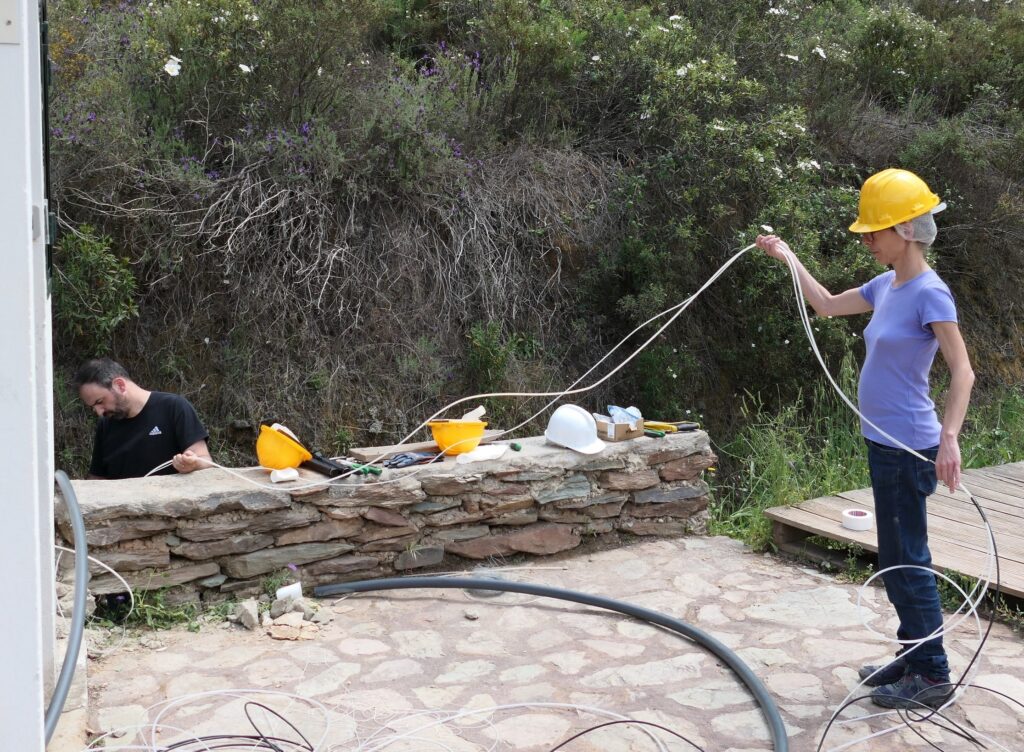
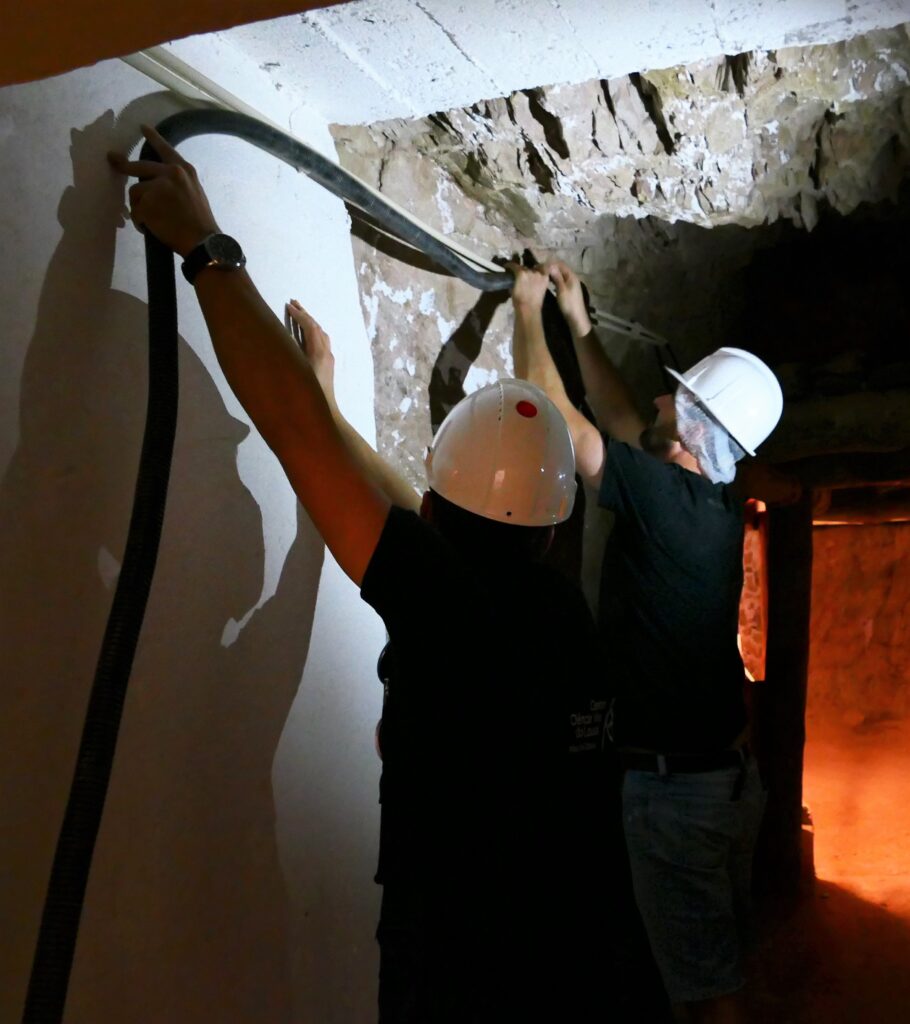
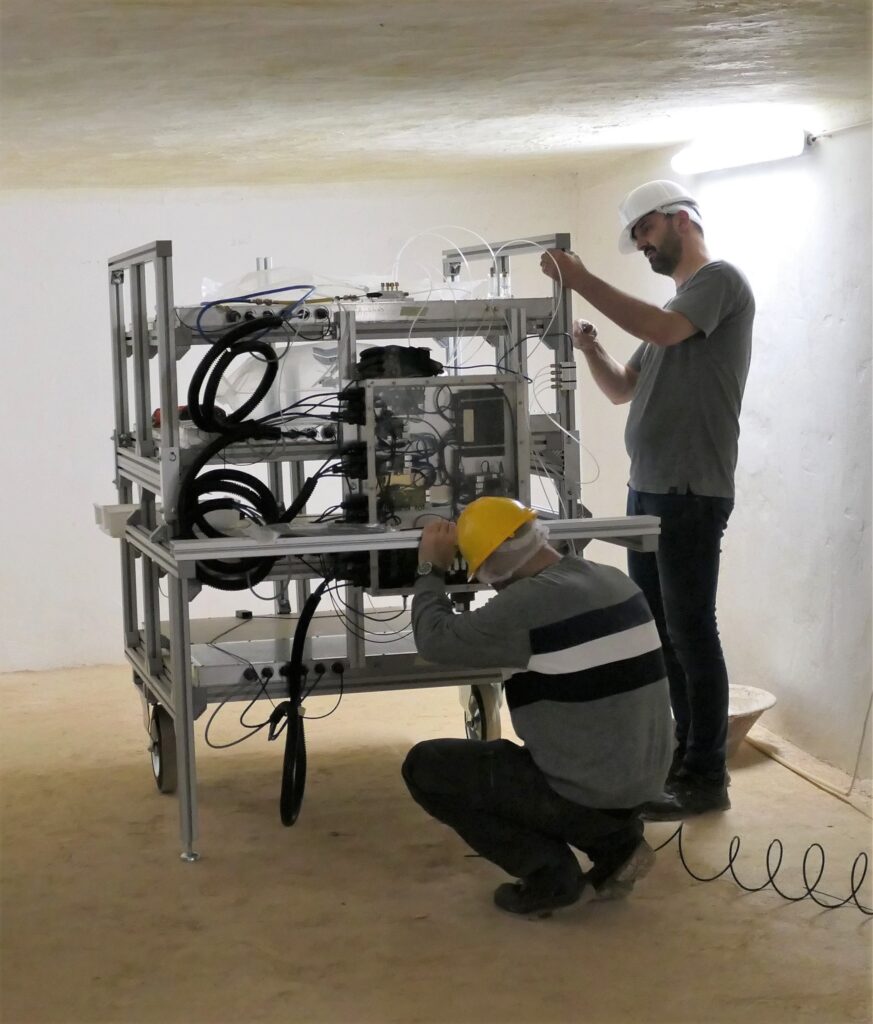
The storeroom where the telescope is located was an old storage room for explosive material, used in the exploration of the mine. Nowadays, the gallery’s four storerooms house some museum objects included in visits to the mine, as well as some equipment from external projects, such as the LouMu muography project.
Muographic Detection
The goal of the muographic detection inside the storeroom is to make a geological survey of the terrain between the telescope and the surface and to improve the existing information with new geological data. At the same time, as this is LouMu’s first muography application in Portugal, it is being used to evaluate the performance of the telescope and its detectors, as well as the muographic analysis tools.

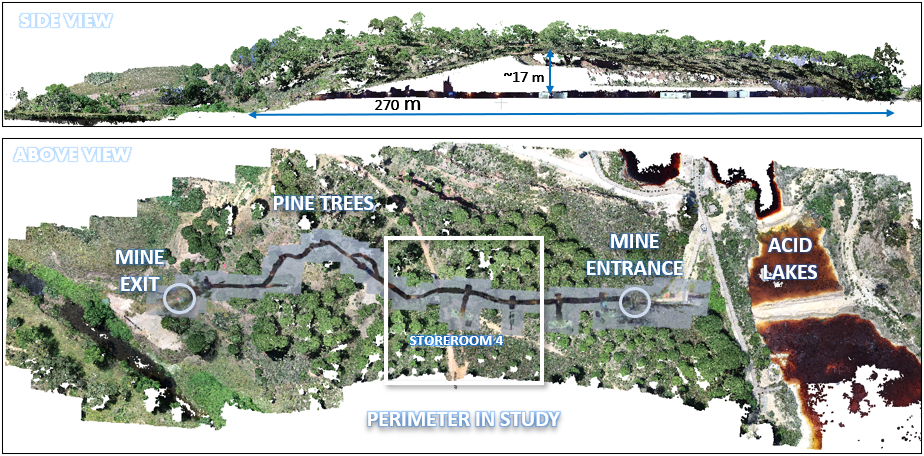
The images above show the framing of the land area being studied with the muon telescope. It is a digital model obtained with combined data resulting from photogrammetry and terrestrial Lidar techniques.
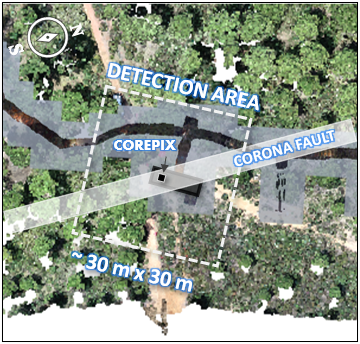

The area of land where the storeroom with the telescope is located is crossed by a regional geological fault called Corona Fault. This is a large structure that was formed when part of the land began to move in a different direction in relation to the other part of land that it is leaned over. The fault zone has a lower density than the rocks next to it and therefore can be easily detected with muography. The first muograph obtained at the site shows the differences in density found on the ground, based on the detection of muons that crossed over the course of 2 months and reached the muon telescope. Thus, in this first muography, the fault zone appears in colors close to yellow, meaning that more muons crossed the ground in that zone, as it is less dense than the zones colored in blue.

New telescope positions are being tested to observe the fault from different angles and achieve a more comprehensive observation.
To complement the detection data, new simulations are being developed to help refine the data and improve muographic interpretation.
– click on the button and see the telescope detection in real time –
